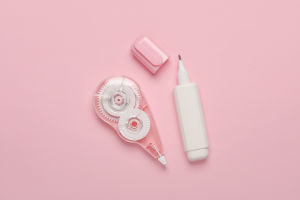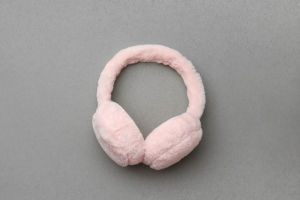
Correction tape, a convenient and efficient stationery tool, has become a "must-have" in the daily lives of students, office workers, and even households.
This article will delve into the origins, features, usage tips, type selection, and maintenance of this compact yet magical tool.
1. Origins and Development
The emergence of correction tape dates back to the late 20th century. Compared to traditional correction fluid, it offers a cleaner, safer, and more convenient alternative.
While correction fluid requires drying time, correction tape gained popularity for its instant usability. With technological advancements, the design of correction tape has evolved to meet diverse needs, including compact portable options and refillable models.
2. Features
The core advantage of correction tape lies in its "instant use, instant cover" functionality, highlighted by the following characteristics:
-Clean and Eco-friendly: Unlike correction fluid, correction tape has no odor and does not require solvents, making it healthier and more environmentally friendly.
-Easy to Use: Simple to operate, correction tape corrects errors in one swipe without waiting for drying.
-Neat and Seamless: The smooth surface left by correction tape facilitates rewriting and looks clean and tidy.
-Versatile Applications: It’s not just for fixing text errors but also for creative purposes such as decorating DIY cards or notebooks.
3. How to Use
Although correction tape is straightforward to use, mastering a few techniques can make it even smoother:
-Steady Pressure: Keep the tape head pressed firmly against the paper and apply consistent pressure to ensure even coverage.
-Optimal Angle: Using the tape at a 45 to 60-degree angle usually yields the best results, preventing uneven coverage or breaks.
-Smooth Pull: Pull the tape steadily from start to finish without stopping midway to avoid gaps.
-Avoid Rough Paper: Correction tape works better on smooth paper surfaces; rough paper may damage the tape or cause it to break.
4. Choosing the Right Type
The market offers a wide variety of correction tapes. Selecting the right one depends on your specific needs:
1. Disposable Correction Tape: Economical and suitable for occasional use.
2. Refillable Correction Tape: Ideal for frequent use, it is cost-effective and eco-friendly by reducing waste.
3. Multifunctional Correction Tape: Features colorful or patterned designs, popular among journaling enthusiasts for creative decoration.
4. Mini Portable Correction Tape: Compact and easy to carry, perfect for students and professionals.
5. High-Capacity Correction Tape: Designed for heavy users, with longer tape lengths that reduce the need for frequent replacements.
5. Maintenance and Care
To extend the lifespan of your correction tape, consider these tips:
-Avoid Dropping: The internal roller mechanism is delicate, and falls may cause it to jam.
-Keep Dry: Store in a dry environment to prevent the tape from losing adhesiveness due to moisture.
-Proper Storage: Avoid compressing the tape during storage to prevent deformation of internal parts.
6. Extended Uses
Beyond correcting writing mistakes, correction tape is widely used in other creative scenarios:
-Journaling: Colored or patterned correction tapes are excellent for adding creative touches to journals.
-Art Edits: In drawing, correction tape can cover mistakes, allowing for easy adjustments.
-Crafting: For card design or DIY projects, correction tape serves as a unique decorative element.
Correction tape is undoubtedly a "miracle tool" in our daily lives. Not only does it help us quickly fix writing errors, but it also inspires colorful creativity. The next time you use correction tape, take a moment to appreciate its convenience and versatility—you might even discover new and exciting uses!


